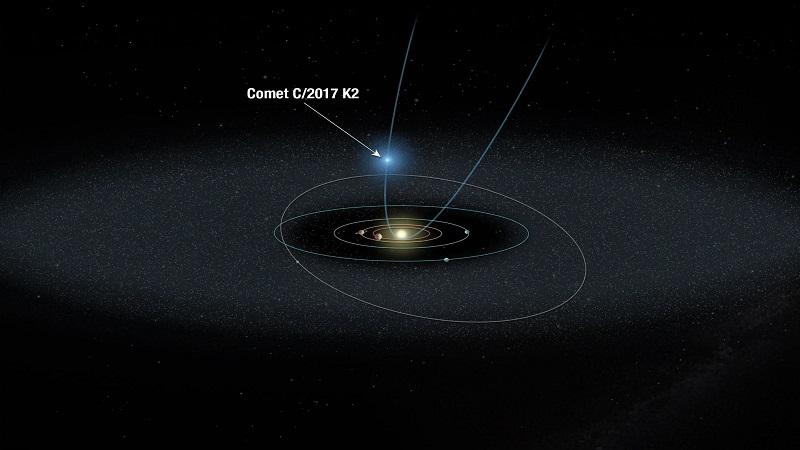
There is a guest in our backyard. This week, Comet K2 will pass close to the Earth. Although they are fascinating, comets are not particularly rare. They are created from ice, dust, and water. The furthest active comet discovered is Comet K2. Also, scientists are baffled by this one.
The Oort cloud, a collection of comets and other frozen spaceballs in the far reaches of our Solar System, is where comets “dwell.” One of the comets is prodded by external gravitational forces, at which point it enters the Sun’s gravitational field and begins to move millions of miles in that direction. The comet starts to warm up and ice starts melting as it slowly approaches the Sun. As the comet gradually comes closer to the Sun, it begins warming up and ice begins melting. As this happens, the water and other materials form the tail and halo of the comet.
This procedure often begins when the comet is around Jupiter. But while Comet K2 was around Neptune, it showed traces of this activity. When the comet was in a part of the solar system where solar rays are too weak to melt the comet’s ice, the comet began to grow a halo.
They resemble time capsules, comets. They contain elements and substances that were created during the Solar System’s development. Thus, comet research is crucial for scientists.
‘It’s kind of like being able to touch something from the beginning of the solar system,’ David Jewitt, an astronomer at University of California, Los Angeles, told Space.com. “It’s probably the most primitive thing in the inner solar system at this time.’

Post Your Comments